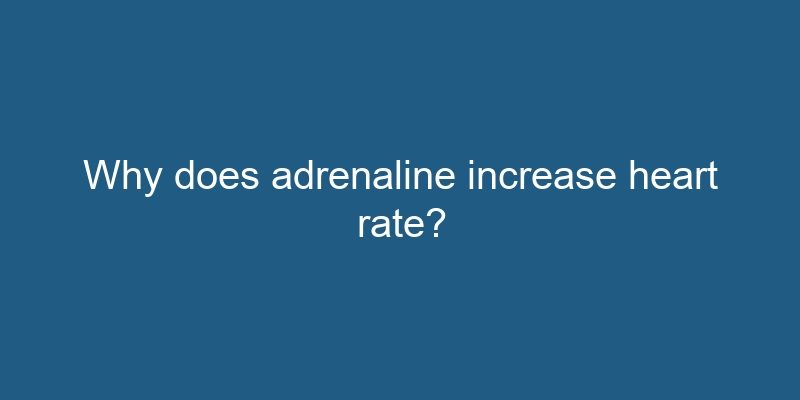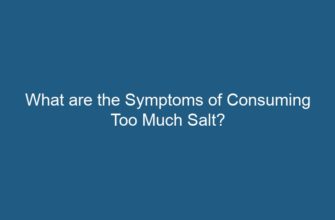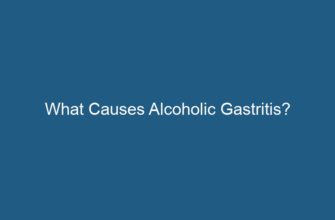Adrenaline, also known as epinephrine, is a hormone and neurotransmitter released by the adrenal glands in response to stress or danger. One of the primary effects of adrenaline on the body is the increase in heart rate. This increase in heart rate is a crucial part of the body’s stress response, commonly known as the fight-or-flight response.
- The role of adrenaline in the body
- Stimulation of beta-adrenergic receptors
- Stimulation of the sinoatrial (SA) node
- Effects of adrenaline on cardiac contractility
- Activation of beta-adrenergic receptors in cardiac muscle cells
- Epinephrine/NE (heart rate, altered blood flow, glycogenolysis & bronchodilation)
- Regulation of adrenaline release
- Hypothalamus detection of stress
- Activation of the sympathetic nervous system
- FAQs
- Q: What other physiological effects does adrenaline have?
- Q: Can adrenaline be harmful to the body?
- Q: What factors can trigger the release of adrenaline?
- Q: Are there any medical conditions that can affect the body’s response to adrenaline?
- Q: Can adrenaline levels be measured in the body?
- Q: Can adrenaline be used as a medication?
- Conclusion
The role of adrenaline in the body
Adrenaline plays a vital role in preparing the body to react to stressful situations. When faced with a threat, whether it’s physical or psychological, the adrenal glands release adrenaline into the bloodstream. This hormone then travels to different parts of the body, including the heart, to initiate various physiological changes.
Stimulation of beta-adrenergic receptors
Once adrenaline reaches the heart, it binds to beta-adrenergic receptors located on the surface of cardiac cells. These receptors are specifically designed to recognize adrenaline and trigger a cascade of events inside the cells.
When adrenaline binds to beta-adrenergic receptors, it activates a signaling pathway that leads to an increase in the concentration of cyclic adenosine monophosphate (cAMP) within the cardiac cells. This increase in cAMP levels initiates a series of cellular responses, including an increase in heart rate.
Stimulation of the sinoatrial (SA) node
Within the heart, the sinoatrial (SA) node serves as the natural pacemaker. It generates electrical impulses that regulate the heart’s rhythm and control the rate at which it beats. Adrenaline enhances the activity of the SA node by increasing the influx of calcium ions into the cells.
The increased calcium ion levels stimulate the SA node to fire electrical impulses at a faster rate. As a result, the heart rate increases, allowing for a more rapid delivery of oxygen and nutrients to the body’s tissues. This increased heart rate is essential for the body to respond effectively to a perceived threat.
Effects of adrenaline on cardiac contractility
In addition to increasing heart rate, adrenaline also enhances the contractility of the heart muscle. This means that each individual heart contraction becomes stronger and more forceful.
Activation of beta-adrenergic receptors in cardiac muscle cells
Similar to its interaction with beta-adrenergic receptors in the SA node, adrenaline binds to these receptors on the surface of cardiac muscle cells. This binding triggers the release of calcium ions from internal cellular stores and increases the sensitivity of the contractile proteins within the muscle cells.
The increased calcium ion concentration and enhanced contractile protein sensitivity lead to a more forceful contraction of the heart muscle. This increased contractility ensures that a greater volume of blood is pumped with each heartbeat, enabling the body to meet the demands of the stress response.
Epinephrine/NE (heart rate, altered blood flow, glycogenolysis & bronchodilation)
Regulation of adrenaline release
Adrenaline release is tightly regulated to ensure an appropriate response to stress. The release of adrenaline is primarily controlled by the sympathetic nervous system, which is responsible for activating the fight-or-flight response.
Hypothalamus detection of stress
When the brain perceives a stressful situation, it sends signals to the hypothalamus, a small region at the base of the brain. The hypothalamus acts as the master regulator of the body’s stress response and communicates with the adrenal glands to initiate the release of adrenaline.
Activation of the sympathetic nervous system
Upon receiving signals from the hypothalamus, the sympathetic nervous system releases norepinephrine, another stress hormone, which acts as a messenger to stimulate the adrenal glands. This stimulation triggers the release of adrenaline into the bloodstream, leading to the various physiological responses associated with the fight-or-flight response.
FAQs
Q: What other physiological effects does adrenaline have?
A: In addition to increasing heart rate and contractility, adrenaline also causes blood vessels to constrict, which helps redirect blood flow to vital organs and muscles. It also dilates the airways in the lungs, enhances glucose release from the liver, and increases mental alertness and focus.
Q: Can adrenaline be harmful to the body?
A: While adrenaline plays a crucial role in the body’s stress response, prolonged or excessive release of adrenaline can have negative effects. Chronic stress and repeated activation of the fight-or-flight response can contribute to various health issues, such as high blood pressure, heart disease, and weakened immune function.
Q: What factors can trigger the release of adrenaline?
A: Adrenaline release can be triggered by various factors, including physical threats, emotional stress, intense physical exercise, pain, and certain medical conditions such as asthma attacks or allergic reactions.
Q: Are there any medical conditions that can affect the body’s response to adrenaline?
A: Yes, certain medical conditions can alter the body’s response to adrenaline. For example, individuals with cardiac arrhythmias or heart conditions may experience abnormal heart rhythms or increased risk of heart complications when exposed to adrenaline. It is essential for individuals with these conditions to work closely with their healthcare providers to manage their adrenaline response effectively.
Q: Can adrenaline levels be measured in the body?
A: Yes, adrenaline levels can be measured through blood or urine tests. These tests are often used in medical settings to diagnose certain conditions, such as pheochromocytoma, a rare tumor that causes excessive adrenaline production.
Q: Can adrenaline be used as a medication?
A: Yes, adrenaline can be administered as a medication in certain situations. It is commonly used in emergency medicine to treat severe allergic reactions (anaphylaxis), cardiac arrest, and asthma attacks. Adrenaline injections, also known as epinephrine auto-injectors, are often prescribed to individuals with known severe allergies to be used in case of an emergency.
Conclusion
Adrenaline, as a hormone and neurotransmitter, plays a significant role in increasing heart rate and enhancing cardiac contractility. Its release is part of the body’s stress response, enabling individuals to respond quickly and effectively to perceived threats. However, it is essential to manage stress levels and ensure that adrenaline release remains within a healthy range to avoid potential long-term health consequences. Understanding the mechanisms and effects of adrenaline on the heart provides insights into the intricate interplay between our physiological responses and our emotional and physical well-being.










